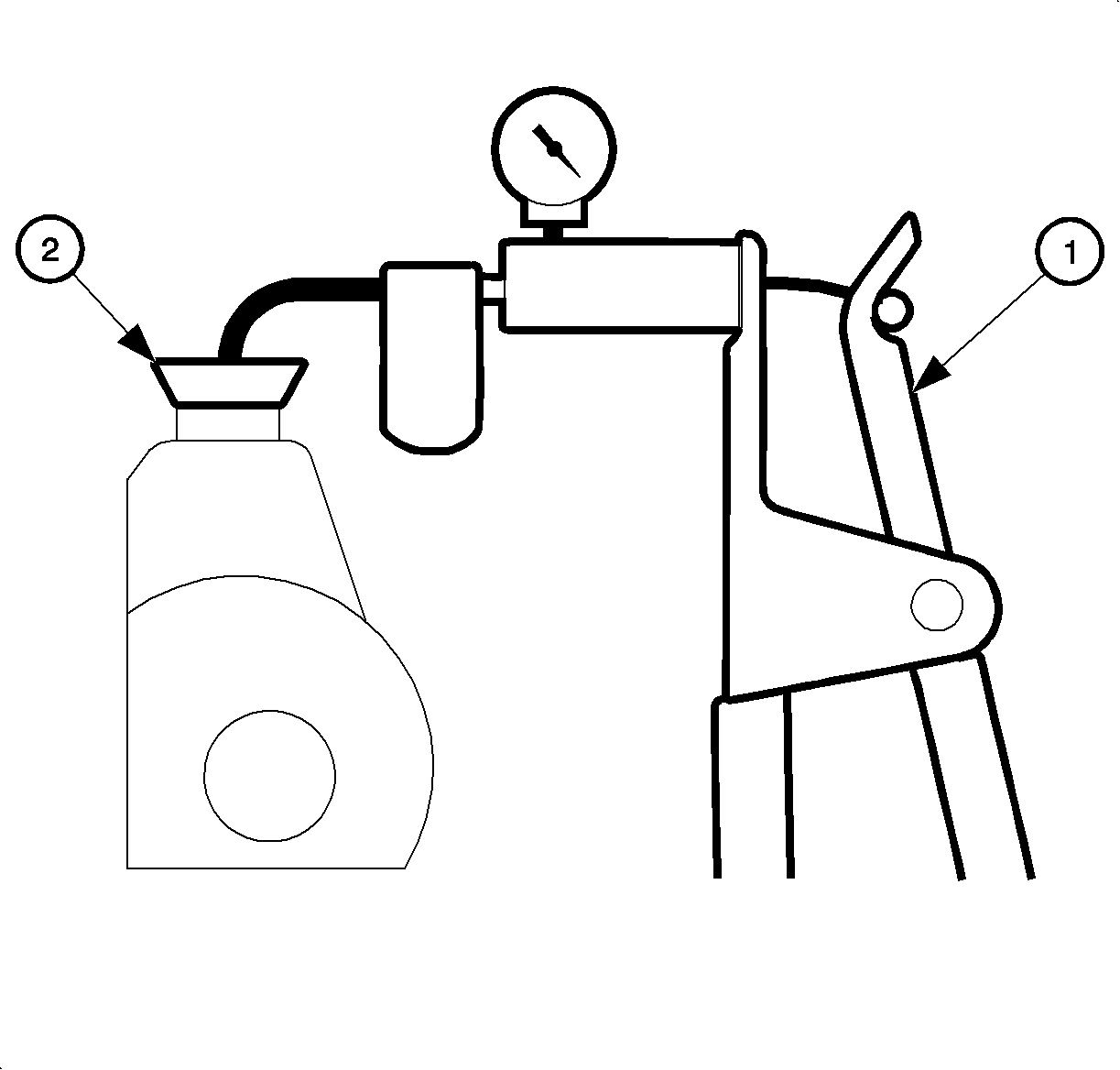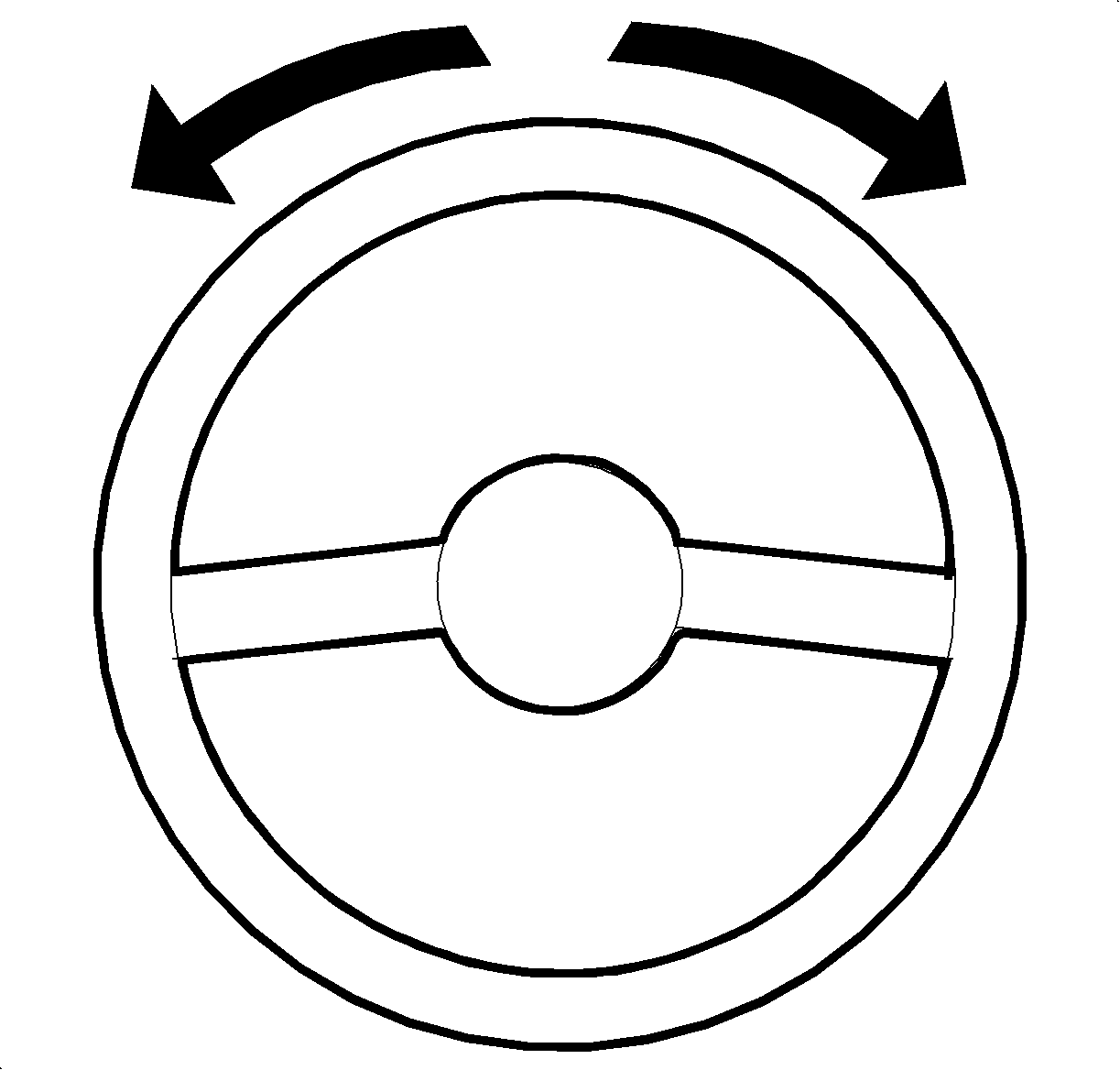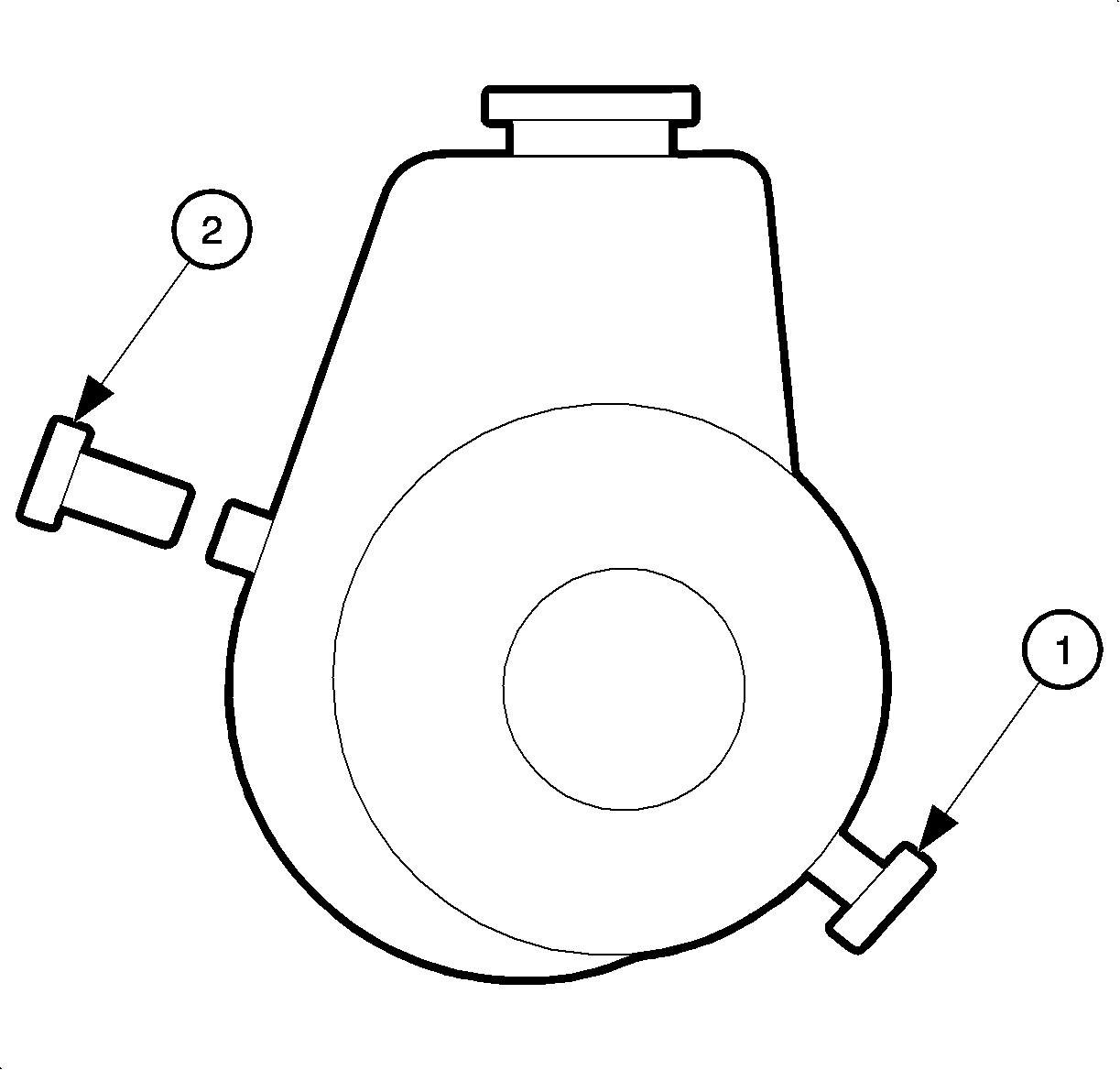Tools Required
SA9180NE Vacuum Tester
Bleed Procedure
Notice: When adding fluid or making a complete fluid change, always use power steering
fluid meeting. Failure to use the proper fluid may cause hose and seal damage and
fluid leaks.
Important: Bleed the steering system for the following reasons:
| • | Fluid line disconnected |
| • | Steering system noise occurs |
| • | Prevention of pump damage |
| • | Proper system operation |
Important:
| • | Use clean, new power steering fluid type only. |
| • | Hoses touching the frame, body or engine can cause system noise. |
| • | The hoses must not touch any other part of the vehicle. |
| • | Loose connections may not leak, but could allow air into the steering
system. |
| • | Verify that all hose connection are tight. |
| • | Maintain the fluid level throughout the bleed procedure. |
- Remove the pump reservoir cap.
- Fill the pump reservoir with fluid to the FULL COLD level.

- Attach the Power
Steering Bleeder Adapter (2) to the SA9180NE
(1).
- Place the Power Steering Bleeder Adapter (2) on the pump reservoir filler
neck.
- Apply a vacuum of 20 Hg maximum.
- Wait 5 minutes. Typical vacuum drop is 2-3 in Hg.
If the vacuum does not remain steady, see Special Conditions at the end of this procedure.

- Reinstall the pump
reservoir cap.
- Start the engine. Allow the engine to idle.
- Turn OFF the engine.
- Verify the fluid level. Repeat steps 8-10 until fluid stabilizes.
- Start the engine. Allow the engine to idle.
Important: Do not turn steering wheel to lock.
- Turn the steering wheel 180-360 degrees in both directions 5 times.
- Switch the ignition OFF.
- Verify the fluid level.
- Remove the pump reservoir cap.

- Attach Power Steering
Bleeder Adapter (2) toSA9180NE
(1) or equivalent.
- Place Power Steering Bleeder Adapter (2) on the pump reservoir filler
neck.
- Apply a vacuum of 20 Hg maximum.
- Wait 5 minutes.
- Verify the fluid level.
Special Conditions Procedure

- If the vacuum continues
to drop, remove the pressure and return hose from the pump.
- Install the plugs (1, 2) supplied with the Power Steering Bleeder Adapter
into the pressure and return port.

- Attach the Power
Steering Bleeder Adapter (2) toSA9180NE
(1) or equivalent.
- Place the Power Steering Bleeder Adapter (2) on the pump reservoir filler
neck.
- Apply a vacuum of 20 Hg maximum.
- If the vacuum drops again, repair or replace the pump. If the vacuum holds
steady, continue to check the other parts of the steering system.
Important:
| • | Fluid must be free from bubbles. Be aware of periodic bubbles that indicate
a loose connection or pressure hose. |
| • | Fluid must be free from discoloration. |
- Observe the fluid.
- If condition persists, replace the following parts:
| • | The return hose O-rings |
| • | The pressure hose O-rings |
| • | The gear cylinder line O-rings |
| • | The reservoir to pump O-ring |
- Repeat the bleed procedure from the beginning.
- Drive vehicle approximately 16 km (10 mi) to warm system
to operating temperature. Evaluate vehicle on a smooth flat surface.
- To check for noise problems, verify the following items:
| • | There is a smooth power assist. |
| • | The vehicle operates quietly. |
| • | The pump maintains the proper fluid level. |
| • | There is no leaking in the steering system. |
| • | The fluid is free of foam or discoloration. |





